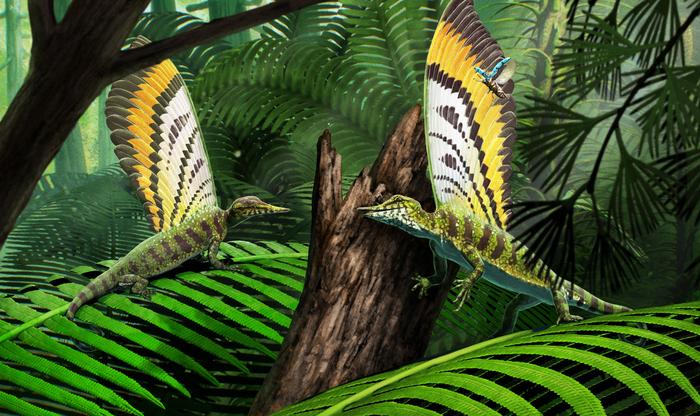Now Reading: 247-Million-Year-Old Reptile Discovered with Feather-Like Structures
-
01
247-Million-Year-Old Reptile Discovered with Feather-Like Structures
247-Million-Year-Old Reptile Discovered with Feather-Like Structures

Quick Summary
- Species finding: A new Middle Triassic species,Mirasaura grauvogeli (“Grauvogel’s Wonder Reptile”),has been identified with fossil evidence dating back approximately 247 million years.
- Unique Feature: The reptile exhibited feather-shaped skin appendages in the form of a back crest, distinct from true feathers seen in dinosaurs and birds.
- Evolutionary Insight: these structures are solid blades rather than branching barbs,indicating independant evolution separate from the feather advancement seen later in dinosaurs.
- Ecology: Mirasaura was likely arboreal, living among trees and feeding on tiny tree-dwelling insects.
- Meaning: This discovery pushes back the timeline for complex skin appendages to a period predating dinosaurs, offering new insights into reptilian evolution.
- Fossil History: All 80 well-preserved fossils were originally discovered by Louis Grauvogel in France during the 1930s and later analyzed at Germany’s State Museum of Natural History.
Image Caption 1: Fossil of Mirasaura grauvogeli, preserving its notable crest (Image Credit: Stephan Spiekman).Image caption 2: Holotype showcasing characteristics such as a bird-like skull (Image Credit: Stephan Spiekman).
Indian Opinion Analysis
The discovery of Mirasaura grauvogeli introduces critical data about early reptilian evolution during the Middle Triassic-an era even older than dinosaurs’ dominance. By identifying these independently evolved feather-like structures, scientists underscore how diverse evolutionary pathways can produce similar adaptations for display purposes across species. For India’s robust paleontological community focusing on prehistoric biodiversity across Gondwanaland regions (modern India once being part), this finding acts as encouragement to explore comparable structural innovations among local Triassic or Jurassic-era fauna.
This study also bolsters global efforts to decipher evolutionary mechanisms that might parallel or diverge between ancient reptiles like Mirasaura and modern avian descendants. As institutions like india’s Birbal Sahni Institute of Palaeosciences expand exploration efforts, understanding prehistoric ecosystems growing within subcontinental contexts coudl contribute deeper insights into reptilian history unique to Asia’s geological past.
























